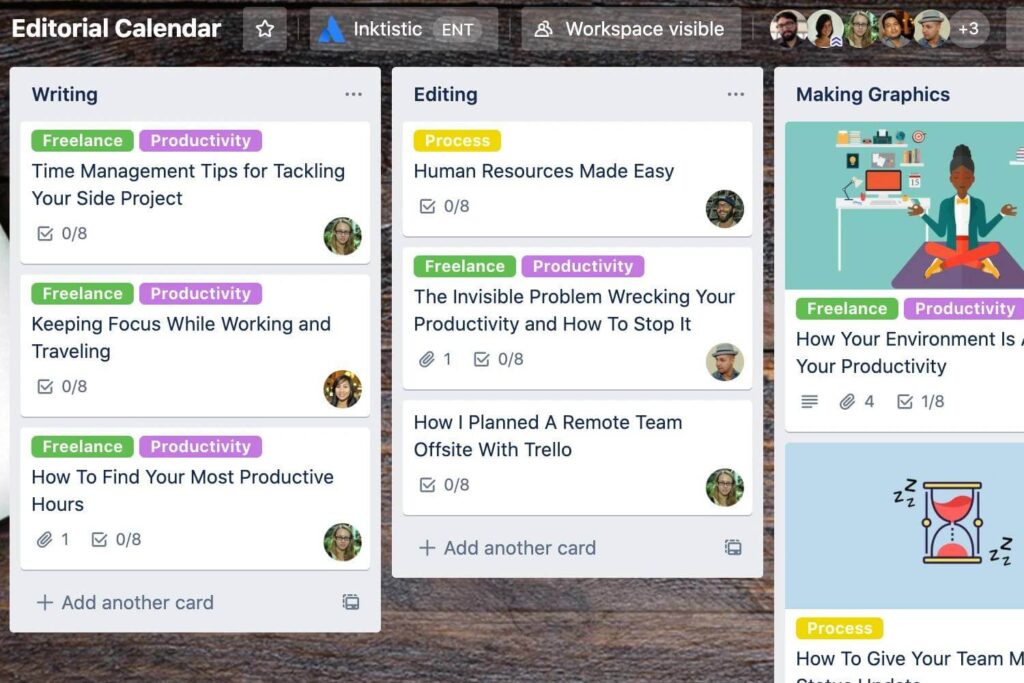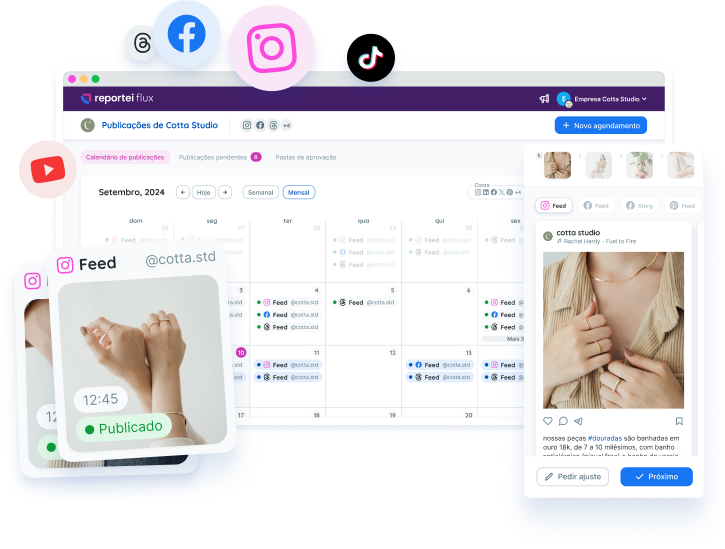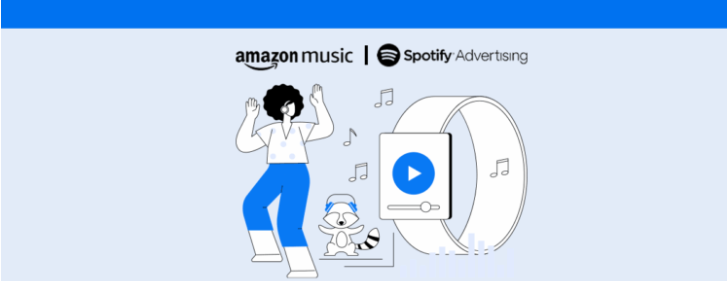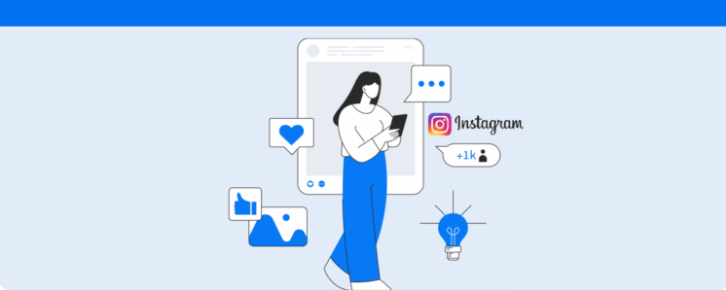Learn why improvisation can be detrimental to your content creation and see tips on how to maintain an efficient planning routine.
Undoubtedly, content creation is an essential pillar for digital success for any brand or professional.
However, frequently relying on improvisation can turn an activity that should be strategic into something unproductive and, in many cases, without consistent results.
Therefore, to ensure solid and sustainable performance, it’s essential to establish a well-structured content creation routine..
That’s why we’ve prepared this article to help you create social media plans that steer away from improvisation and favor concrete results across all channels. Let’s get started.
Why improvising content negatively affects your results
At first, improvisation within the routine of a social media might seem like an attractive solution because of the possibility to act quickly and explore trending topics, offering a sense of immediate flexibility and spontaneity.
However, although this initially sounds advantageous, the negative effects of this practice soon begin to appear.
After all, content produced in haste doesn’t always go through careful planning.
As a result, you run the risk of them lacking depth, not aligning with the audience’s expectations and needs, or the brand’s strategic objectives.
Another significant impact of constant improvisation is inconsistency.
That’s because without planning, it’s difficult to maintain a stable publishing frequency, and the lack of a defined schedule hinders the construction of a clear and coherent identity on social media.
Finally, regular improvisation tends to create a stressful and chaotic work environment for the professionals responsible for content creation.
The pressure to quickly deliver last-minute posts raises anxiety levels and reduces the space for creativity and innovation. Thus, over time, this directly affects overall productivity and the well-being of the team.
Therefore, although improvising may seem tempting at specific times, adopting a structured routine is essential to ensure quality, relevance, and consistency in strategies.
What is the difference between creating content and producing with strategy?
Have you ever stopped to question whether your content creation is actually strategic? Or does it just exist in a routine without planning?
Understanding this difference is fundamental to making your work more productive and aligned with the marketing objectives of the client.
That’s because creating content without a well-defined strategy usually means producing punctual or isolated posts without a clear connection to larger goals or without detailed prior planning.
In this way, this type of creation tends to be reactive, with little coherence between posts.
On the other hand, strategic production involves careful planning, well-defined objectives, and a constant alignment with the audience’s needs and desires.
Thus, each publication is developed to fulfill a specific role within the brand’s communication plan, such as
- increasing engagement,
- consolidating brand authority,
- capturing qualified leads,
- or boosting sales.
In this way, content ceases to be an isolated activity and becomes an integrated and valuable tool within the digital marketing strategy, capable of generating tangible and positive results for companies.
How to organize an effective content creation routine
Having said that, to establish an efficient routine that does not depend on improvisations, it’s worth following some fundamental steps. They are:
1. Alignment with marketing objectives
First of all, before creating any content, it’s important to clearly define your strategic objectives for social media and digital presence as a whole.
Whether it’s increasing reach, engaging the audience, capturing leads, or generating sales, your objectives will guide the entire creative process. in addition to ensuring focus and relevance for your publications.
2. Monthly planning for content creation
Next, develop a detailed monthly editorial calendar. In other words, define in advance the topics to be covered, formats (videos, feed posts, or stories), and important dates related to your audience.
Monthly planning provides clarity, facilitates time management, and ensures consistency in content publication.
3. Creating an idea bank
To avoid creative blocks, it’s important to always keep an updated idea bank.
In this way, note down suggestions for topics, frequent audience questions, insights obtained from feedback, report analyses, or market research.
This bank will be a valuable source for planning, avoiding improvisations and ensuring relevant content.
4. Use of templates and visual standards for content creation
Developing templates and visual standards also facilitates and speeds up content production..
In addition to saving time, this practice ensures a consistent visual identity across all digital platforms and strengthens the brand’s image.
Another positive point is that creating templates for text and video formats can further optimize the creative process, allowing you to focus efforts on more impactful ideas and content.
5. Defining an appropriate frequency
Alongside all the steps above, it’s essential to establish a realistic frequency appropriate for your audience.
After all, both very sparse and excessively frequent publications can harm audience retention and engagement.
Therefore, the ideal frequency is one that keeps your audience engaged without overburdening those who create the content.
Therefore, always test different frequencies and analyze social media metrics to understand what works best for your audience.
6. Content management tool
Finally, using specialized tools for content management and scheduling optimizes time, reduces errors, and increases approval efficiency..
That’s because these platforms centralize tasks, simplify daily operations, and provide a broad view of the entire creative process.
Moreover, many tools offer detailed reports that help in analyzing the performance of published content.
With that in mind, we’ve selected three options below that can help make your routine more productive. Check them out.
Google Sheets
Free of charge, Google spreadsheets are widely used to structure editorial calendars, organize ideas, and track production status..
They are also easily shared among teams, simplify collaboration, and ensure greater control of the process.
You can also add specific tabs to track publication results, which will facilitate future analyses and the development of your planning.
Trello,
Another tool to consider is Trello, which helps visually organize tasks and allows easy tracking of content production stages.
After all, its boards, lists, and cards are handy for quickly viewing pending, ongoing, and completed tasks..
Additionally, you can also add deadlines, responsibilities, and specific checklists for each task, ensuring even more control.

Reportei Flux
Finally, the new platform Reportei Flux is complete and specialized in content management and post scheduling.
Indeed, its features were designed to considerably ease the daily operations of agencies, freelancers, social media managers, and companies. See how it can help.
- Social media centralization it’s possible to manage all your networks—Instagram, Facebook, TikTok, Threads, LinkedIn, and others—in one place.
- Agile and quick scheduling schedule multiple posts across various networks simultaneously, saving time for other activities.
- Intuitive visual calendar to clearly visualize planned content, which simplifies adjustments and quickly identifies opportunities for improvement.
- Batch approval simplification you can group posts for review, ensuring team alignment and reducing communication noise.
- Analytical reports access the performance of posts through the Reportei reports, which helps understand which content performed best and allows for strategic adjustments in the future.

In other words, Reportei Flux transforms content creation and management into an efficient and organized process, eliminates improvisations, and increases the productivity of involved teams.
Are you ready to abandon improvisation and elevate your digital content production to a new level?
Get to know Reportei Flux and discover how this tool can optimize your actions on social media.



